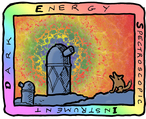Changes between Version 1 and Version 2 of PublicPages/MayallZbandLegacy/NotesforObservers/Copilot
- Timestamp:
- Feb 8, 2016 12:21:49 PM (9 years ago)
Legend:
- Unmodified
- Added
- Removed
- Modified
-
PublicPages/MayallZbandLegacy/NotesforObservers/Copilot
v1 v2 1 1 = Copilot = 2 2 3 *copilot.py*is a script that watches for new images, measures them,4 and produces a plot, *recent.png*to help observers understand what3 `copilot.py` is a script that watches for new images, measures them, 4 and produces a plot, `recent.png` to help observers understand what 5 5 the conditions are doing. 6 6 7 7 Start it from the `mzls@mayall-idl.kpno.noao.edu` account, 8 8 {{{ 9 cd ~/obsbot 9 10 python copilot.py & 10 11 }}} … … 18 19 An example plot is shown here: 19 20 20 [[Image( copilot-example.png)]]21 [[Image(https://desi.lbl.gov/trac/attachment/wiki/PublicPages/MayallZbandLegacy/NotesforObservers/Copilot/recent.png)]] 21 22 22 23 The top panel shows the seeing. Any problems with the data we know … … 35 36 36 37 38 The second panel shows the Sky brightness. The "nominal" brightness 39 is shown by the magenta horizontal line. In this panel, the pass 40 number of previous exposures is shown. (This corresponds to the pass 41 we thought the image was going to be, not what the actual conditions 42 delivered.) 37 43 44 The "transparency" panel shows what fraction of the light from stars 45 is getting through the atmosphere to us. Around 90% usually indicates 46 clear photometric conditions. 47 48 The "exposure time" panel is complicated. The hollow black dots show 49 the actual exposure time of the images we took. The magenta dots show 50 the exposure time we should have taken, given the measured conditions 51 in that image; it's post-facto what we should have done. We have 52 lower and upper bounds on the exposure times, 80 and 250 seconds. If 53 the "post-facto" target exposure time is below or above the bounds, it 54 is shown with a triangle, and a circle will also be plotted at the 55 lower or upper bound line. 56 57 The "depth factor" plot just shows our actual exposure time divided by 58 the post-facto target exposure time. 1 indicates that we're doing 59 exactly what we should be doing. Greater than 1 indicates we're 60 over-exposing, and less than 1 indicates that we're under-exposing. 61 The vertical labels show the exposure numbers. 62 63 64 Note that zeros and focus frames will not show up on the plot. 65 66
